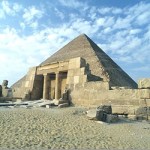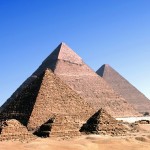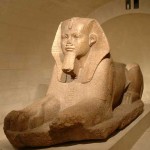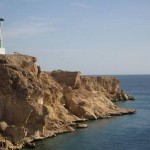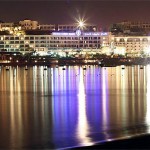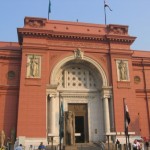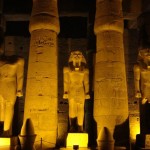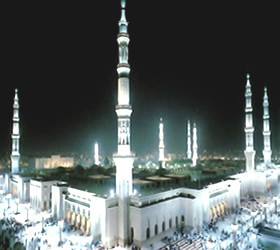 The bad traveller always takes personal baggage with him, forget the overloaded Samsonite. He drags along expectations, demands and life experiences that colour his adventures. This is a mistake. When you leave the home country, leave it all behind. Arriving in Cairo, you get a sense of this although what you will immediately recognise are the exotica clichés: colourful markets, people, cats and cars jostling for space, a melange of eye- popping architecture and the modern and the ancient shaking hands at every corner.Waking up at the Conrad, though, the first sight from the balcony is the mist that shrouds mud-coloured buildings along the Corniche El Nil, the heavy waters of the Nile below, the almost tactile humidity in the air and, if you allow your imagination some rein, a waiting. There is one thing you need to arm yourself with before your first stop at the Egyptian Museum: Patience to deal with the tourist hordes. Yes, irony noted.
The bad traveller always takes personal baggage with him, forget the overloaded Samsonite. He drags along expectations, demands and life experiences that colour his adventures. This is a mistake. When you leave the home country, leave it all behind. Arriving in Cairo, you get a sense of this although what you will immediately recognise are the exotica clichés: colourful markets, people, cats and cars jostling for space, a melange of eye- popping architecture and the modern and the ancient shaking hands at every corner.Waking up at the Conrad, though, the first sight from the balcony is the mist that shrouds mud-coloured buildings along the Corniche El Nil, the heavy waters of the Nile below, the almost tactile humidity in the air and, if you allow your imagination some rein, a waiting. There is one thing you need to arm yourself with before your first stop at the Egyptian Museum: Patience to deal with the tourist hordes. Yes, irony noted.
You cannot help but be struck by the antiquities on display but there is no air-conditioning except in specific chambers, and many areas are not especially well-maintained or explained. But the chamber housing King Tut’s displays are spectacular, the gold ornaments and the sheer artistry of the mummy coffins making you wonder why the Egyptians spent so much of their lives preparing for death. If you take a look at the King’s Gold Mask, or Queen Nefertiti’s refined image elsewhere, you’ll wonder no more. You’ll also find huge chambers from the Pharaohs’ tombs as big as living rooms, complete with canopic jars to contain the internal organs, although the heart apparently remained in the body, and various animal gods to protect royalty in the after-life. You can, by the way, avoid hiring a guide and do what time-honoured tradition dictates: eavesdrop. It’s true that you can spend days here but really, it’s impossible to linger when the Pryamids beckon.As the van drives through a dusty highway towards Giza, you’re about to yawn when you glimpse two triangles in the distance. Although time and robbers have denuded the limestone-smooth white beauty, these jagged piles still render the viewer speechless. There are smaller pyramids behind the three main structures and the Sphinx is distinctly underwhelming although we salivated on hearing that Andrea Bocelli was scheduled to perform there but at prohibitive prices. The absurd motif lingers with touts urging you to ride their moth-eaten camels and Caucasian women in stilettos teetering around and endless streams of tourist buses marring the landscape but the power of the Pyramids remain. The dichotomy was heightened on overhearing a young American man telling his guide, “I went up and down on that camel and whoa, man! All I can say is that it’s very unlikely I’ll be able to have children!”
If, for whatever reason, you can’t do a Nile cruise between Luxor and Aswan, settle for a dinner cruise on one of the many floating restaurants on the Nile. At Maxim’s, you get the whirling dervish, a belly dancer who gets everybody panting, gender no bar, and hearty food. The minimum price is 190 Egyptian pounds ($33) but you end up paying $50 or more.You may believe that retail is therapy – and who’s to say you’re wrong – but the only thing you need to acquire in Cairo is to be found at a Government perfumery where you can load up on essential oils like ‘Queen of Egypt’ and ‘Osiris’, although we bought girly stuff like strawberry and orange blossom. The wallet can be happier if you get four in one go; they throw in a delicate glass bottle that nevertheless speaks its provenance with garish shades of pink and blue in a minaret-like shape.Into the fourth day, if you’re feeling a tad homesick, cab it to Zamalek. It’s an island in the middle of the Nile in Greater Cairo, which is upmarket and has great cafes like Cilantro and Maison Thomas. Contrast this area to Old Cairo where the peopled, grimy streets with vendors selling sweet potato remind you of Bombay. Enjoy the efficient train ride to Coptic Cairo if possible to take a look at the Hanging Church whose interiors boast of cedar panels and age-old icons.
There can be no dispute that food is the invention of the Gods. The El-Abd Bakery at Talaat Harb is justly famous for its baklava and you can pick up feteer anywhere for its meat-stuffed roti allure, but if you want some ambience, eat at Naguib Mahfouz Cafe at the Khan El Khalili market and polish it off with some hibiscus tea at El Fishawy coffeehouse. At the former, customers seem to think they are in their living-rooms, singing with the live band, bantering loudly and generally behaving as though the world as they know it is a wonderful place. At El Fishawy, it’s all arabesque mirrors, mosaic tiles and sheeshas smoked by people speaking as many different languages as there are sheeshas to go around. This is a good time to note that you must tip everywhere: when you take cabs, when you eat out, when you check out of the hotel and need to thank the housekeeping staff whenever it crosses your mind. Anything from five to 10 Egyptian pounds will work.If you want to do a side trip, Alexandria, they tell you, is paradise. You take a dirty train ride for two-and-a-half hours from Cairo and all you enjoy is the admittedly stunning Hotel Metropole, built in 1902, which looks like a Venetian palazzo, and the boulevard outside where you can have one of the finest fish dinners and coastal views ever at a restaurant called Fish Market. There is no hope of getting an idea of Alexander the Great who founded the city in 331 BC, or as Cleopatra’s birthplace. But the vast Bibliotheca Alexandrina will alleviate some of your pain. So what was that air of waiting one was greeted with on arrival? I think it is to the realisation that the world, contrary to expectation, worldview and personal baggage, is utterly remarkable – Thehindu


